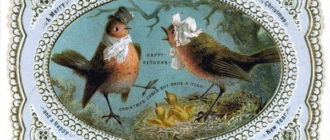
Pilgrimage to the island of Kiferu is one of the iconic works of the French artist Jean Antoine Watteau. The artist’s first paintings produce a Flemish rather than French impression. You expect to see images of gallant holidays, hymns in honor of love and on the canvases there are scenes from the life of a soldier.
And all because Watteau’s youth coincided with the war over the Spanish throne. His homeland, the Netherlands, has become a motley arena of war. And all this, of course, is reflected in the artist’s works. From military life, Watteau moves on to depicting peasant life. And there was nothing to predict that this depictor of the village would eventually become an artist of grace.
Only after his move to Paris, the themes of the paintings change. The place of the village characters is taken by an elegant secular society. It took Watteau 5 years to complete his monumental work. The reason it took him so long was that, in parallel, the artist was working on a growing number of private orders, which brought him a growing reputation and, of course, a good income. Watteau presented the work in 1717. “Pilgrimage to the island of Kiferu” turned out to be one of his masterpieces. Unsurprisingly, Watteau was unanimously accepted by the Academy as the “fêtes galantes” artist. The term symbolizes exquisite scenes in an idyllic countryside setting.
But is the painting really depicting couples going to the island, or are these people returning from it?
“Pilgrimage to the island of Kieferu” remained in the collection of the Academy until 1793, later the painting “moved” to the Central Museum of Art, and later to the Louvre. His success was so great that Watteau wrote the second version at the request of Jean de Julienne, Watteau’s devoted patron and friend. It is thanks to him that we have an early biography of Watteau. In addition, Julien sponsored an unprecedented campaign to preserve his drawings as engravings, which greatly contributed to Watteau’s fame. The second version of the painting, painted in 1718, is currently in the collection of Friedrich II (Friedrich II) at the Charlottenburg Palace in Berlin. It is distinguished by a larger number of figures than the Louvre. The boat, which is supposed to take the pilgrims to the island of paradise, turned into a frigate with a dark pink sail.

The plot of the painting ” Pilgrimage to the island of Kiferu “
It is possible that Watteau was inspired by the 17th century operas or the comedy of Louis Heurteaux dit Dancourt in his Pilgrimage to the Island of Kieferu, such as The Three Cousins, first presented in 1700. The plot is very similar.
The painting, kept in the Louvre, gives the impression of the inspiration of a beautiful moment. Young gentlemen and ladies with shepherd’s staffs entwined with flowers are waiting for the arrival of the boat, which will take them to the shores of the kingdom of love. And as soon as they sit down, as soon as the magic boat approaches the enchanted island, the world will cease to exist for them. They are wrapped in and caressed by the soft sensual air. Roses are fragrant. Around the heavenly doves. A marble statue of Aphrodite glows in the green foliage. There are eight couples in the procession. Their loving and thoughtful meetings create a special ephemeral mood.
The first thing we see in the picture is a young girl with her fan in the foreground. The man is wearing a cape with an embroidered heart (the very symbol of the journey he wants to go on). And what about the girl? There is an indifference on her face, which is perhaps feigned. To the left of this group, there is another pair (in which a man holds his lady’s hands and helps her to get up).
The third scene is located a little further. The admirer hugs his beloved around the waist to encourage her to accompany him. All of these couples head towards a ship adorned with flowers and fluttering red silk pennants. The rowers lean on their oars, ready to sail. And here are the little cupids carried by marshmallows flying over the heroes of the picture.

Painting technique
Without a doubt, the mysterious misty landscape in the distance is one of the most innovative features of the canvas, reflecting the influence of the landscapes of Rubens and Leonardo da Vinci. The artist’s airy translucent strokes make the picture ephemeral, mythical and incomparable. The palette was chosen by the artist and is bright and elegant. Its main shades range from mustard and green (fields and vegetation) to pale pink and silvery blue.
It took a lot of time for Watteau to find the proper colors to express his ideas as a colorist. His early paintings also bear witness to his affinity with the old classics. In them the blinding light of the brush of Rubens (Pieter Paul Rubens) sparkles, the hot ardor of Titian (Tiziano Vecellio) breathes. The foggy landscape, the crowns of trees are masterfully painted, the costumes of the characters and their materials are carefully worked out. Bright costumes of lovers decorate the picture, make it festive.
Watteau’s artistic heritage, represented by one of the iconic paintings “Pilgrimage to the Island of Kieferu” and the subsequent founding of a new genre, pervades French art right up to the emergence of neoclassicism. The sweetness of his palette in the painting is the first thing that catches the eye of the viewer and, of course, is a tribute to Rubens and the colorism of Venetian painting of the 16th century, remade into delicate pastels. The picture carries the main message of the artist the triumph of love and beauty!






